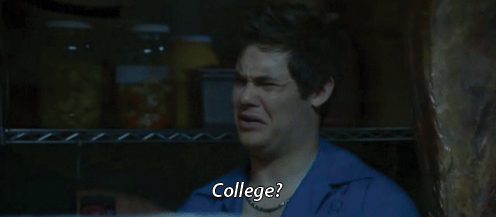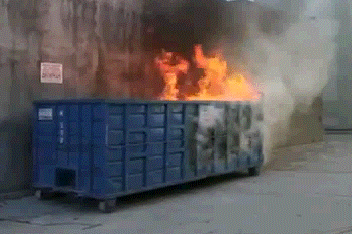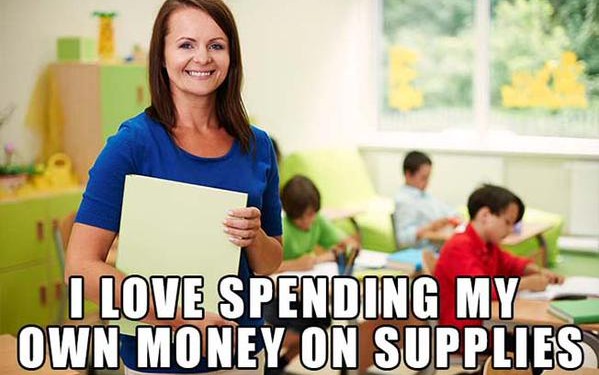Here at the Gloucester Clam, we’re voting YES on Question 4. It’s a no-brainer to us, even if we’re not ourselves users (or are we? who knows). The pros by far and away outweigh the cons, and it means an end to irrational fear over a drug that is overall safe for adults to use, and has a ton of benefits. So to clam-dig ourselves further into why we’re GUNG HO FOR WEED YO, here’s some good reasons why.
One of the main pro-legalization talking points revolves around the benefits of bringing the marijuana industry itself – the entire supply chain- above-board. Bringing it from the streets to downtown businesses by voting yes on four accomplishes several things that aren’t in place with the current quasi-legal status of pot in Massachusetts.
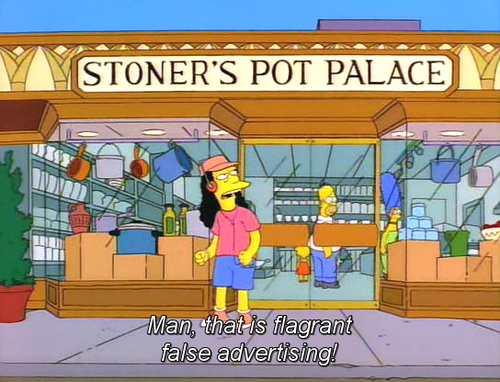
we feel you otto
First, the industrialization makes it safer. Some of the opinion pieces on Question 4 have denigrated it as too focused on making the industry attractive to big business interests. While the question isn’t worded perfectly and we’d all like to see local shops entering the market instead of conglomerates, making pot an industry isn’t a bad thing on the whole – and we can make further changes to the laws down the line. The alcohol industry, for instance, is closely regulated, and the ABV is noted on your can of good ol’ Amuricabeer. You know what you’re getting, how strong it is, and that’s not only safe for you (or some dumb teenager drinking Alize in back of 7/11), but for the people around you. Driving cars. Because you’re not drinking moonshine anymore, you’re expecting the company selling you a product to sell you a safe one. It’s not a gamble.
It’s not like you can overdose and die of too much weed, but the difference between Indica and Sativa mean that if you’re just going to Joe Weedguy who lives in his mom’s basement selling ditch weed, you don’t know what you’re getting and you could either fall asleep or spend the whole day polishing your N64 cartridges. You’re taking the word of someone who posts memes on Facebook about how the Clintons are totally responsible for killing like twelve people.
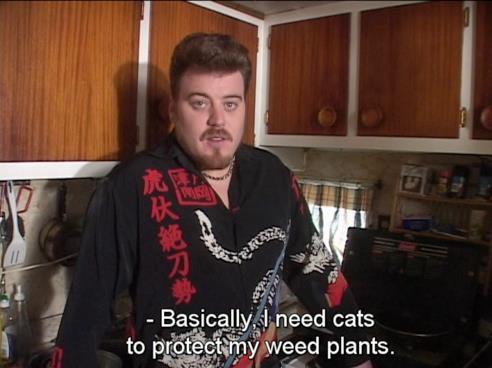
When it’s legal, and you follow the source from your local shop to the distributor, there’s a chain of responsibility there. Correct labeling, intended dosage – these are important for all humans. It’s incredibly rare, but pot you get off the street can also be laced with uncool stuff. Again, incredibly rare. But pot smokers deserve better than this chance. They’re our friends, neighbors, kids, parents, and doctors.
Secondly, legalization and regulation also means that gang involvement and criminal activity surrounding weed dealing will lessen greatly. Of course, it won’t be extinct. I’m not going to blow pot smoke up your ass. But take this article from the Independent Journal Review that reports a 10% DECREASE in the statewide violent crime rate, and 13% drop in the murder rate. A study in the journal Psychology and Addictive Behaviors found that couples who smoked were less likely to engage in domestic violence. And in Colorado, the estimated legal vs illegal pot sales is, astonishingly, 90% to 10%. Legalizing it absolutely worked to destabilize the underground drug market. Full goddamn stop.
The important thing to realize is that money that used to go to violent drug dealing rings now is going elsewhere. Even if most of the Joe Weedguys in our community are actually decent people, sometimes with regular families and lives, the supply chain in many cases is traced back to violent drug cartels, which are estimated to lose billions by the WA and CO legalization.
So now big swaths of cartel money goes to taxes – the third huge benefit of legalization. Taxing marijuana, as Colorado has done, has been successful in bringing in new tax revenue that would have otherwise been borne by all taxpayers. In 2015, the industry (medical and recreational) brought in nearly $1 billion (FRIGGIN BILLION), and $135 million was collected in taxes – with $35 million of that total earmarked for school construction projects. In Washington State, lawmakers had estimated about $36 million would be raised from taxing weed in 2014, the first year that licensed shops opened up. It turns out they underestimated. They brought in $70 million.
Fourth – legalization brings jobs. Maybe Joe Weedguy will be out of a job (let’s face it, most weedguys I know of actually work real jobs anyway), but new, actually tax-paying, jobs will be created. Like, in the case of Colorado, 18,000 IN ONE YEAR. ONE YEAR.
So what’s the downside? Are the fears rational?
I’ve heard some folks, parents especially, voice their reasons for their “no” vote. I understand those reasons, but I don’t agree. Some are misinformed or don’t understand the nuance of the issue, others are just naive.
“I don’t want my kids to have access to it or think it’s normal.” Your kids already have access to it. Don’t delude yourself on that front. Every kid in every town in America will have access to pot in their high school years. This study shows that 80% of 12th graders, as well as 40% of 8th graders, reported marijuana is easily available to them. Sorry to poke holes in this logic, but facts are facts, whether we want to acknowledge them or not. Funny, these same parents have no problem whatsoever with beer ads during football games. Huh.

your kid already, basically
And as far as thinking its normal? Cat’s out of the bag on that as well. It’s not that legalizing weed for consenting, informed adults is what has normalized it – it’s that the inroads into medical marijuana helping patients (it stops constant seizures in kids in some cases), a huge policy shift across multiple states, and media actually reporting on how gee golly it doesn’t kill anyone after all that has normalized it. Sorry, parents. When I was a teenager it was pretty normal and we quickly realized DARE had overblown (pun intended) the dangers of pot, and it was a pretty big letdown.

the worst side effect of weed usage is making cringeworthy facebook posts.
And In the case of Colorado, where marijuana has been legal since 2009, legalizing it not only didn’t lead to the hand-wringing “let’s think about the children who will start smoking now that it’s legal and easy to get,” the opposite happened.
“In 2015, 21 percent of Colorado youths had used marijuana in the past 30 days. That rate is slightly lower than the national average and down slightly from the 25 percent who used marijuana in 2009, before legalization. The survey was based on a random sample of 17,000 middle and high school students in Colorado.”
17,000 is a pretty big sample size, and that matters. Legalization opponents had been harping on a Federal survey that showed use by teenagers had remained flat, and that Colorado’s teen usage was a bit above the national average. But that survey only involved 400 teens, and wasn’t nearly as accurate as the larger-scale study.
The reduction is good to hear. Pot isn’t safe for teenagers long-term (which is why the legal age to procure and smoke would be 21), and it was a reasonable argument that legalization might lead to more teenagers with access to pot and therefore, more smoking. But, it’s looking more and more like that isn’t happening, at all, in any state where it’s currently legal. A study in the medical journal Lancet shows similar findings. And again, pot isn’t safe for teenagers, but it won’t kill them, like underage drinking can. In a heartbeat, I’d tell my kids that smoking pot is a much better alternative to drinking, and if they’re at a party where they feel pressured to try one or the other, I’d rather they smoke so they don’t end up dead of alcohol poisoning.
The anti-legalization folks recently put out this amazingly bad reefer-madness style ad, complete with absolutely false assertions (pot that looks like fucking candy will not be sold in windowsills you dumpsters, and it will still be illegal to smoke on the street, for god’s sakes you bags of ham). This is how ridiculous they look trying to scare the bejebus out of the middle-aged suburban mom voting bloc, but it works.
There are other, non “but my children” reasons against legalization, as well. Some people think there will be increased instances of driving while high, and this is absolutely something to consider. But, again, this is illegal already. Drunk driving is a much more deadly occurrence. Driving while high isn’t as unsafe as drunk driving, but still, no one’s saying it’s ok. But, I have faith that our law enforcement can deal with this problem since they won’t be busting kids for having 1.1 ounce on them now, or spending days staking out teen pot dealers.
What the anti-question 4 folks don’t bring up is that pot is safe, far safer than drinking, and helps a lot of responsible adults feel relaxed, blow off stress, and enjoy themselves. It’s not just dumb kids, it’s folks from all walks of life – lawyers, doctors, EMTs, Rick Steeves on PBS, construction workers, and more, who are able to enjoy it occasionally and responsibly, and they deserve to have the right to purchase pot legally and consume it in their own home.

Or they’re motherfucking astronauts.
So let’s do it. Let’s make some tax money, reduce gang activity, and stop incarcerating and ruining the lives of mainly People of Color for being in possession of weed at the same damn time. Let’s admit we’ve been wrong for a long time in this and finally make it right instead of clinging to notoriously flawed arguments.



